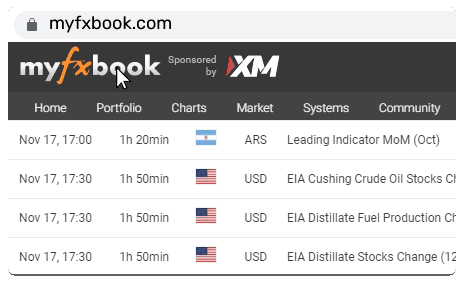Bitcoin's fall below $100K: what the tech selloff says about the market's nerves

Bitcoin (BTCUSD) slipped below the $100,000 mark on Tuesday for the first time since June, extending its slide to a four-month low of $96,794 in New York trading. The drop, which leaves the world's largest cryptocurrency down about 20% from its October peak of $126,000, places it squarely in bear-market territory.
The chill wasn't confined to crypto. AI-linked tech stocks—the other darlings of 2025's risk rally—also lost steam. Nvidia fell nearly 4%, while Palantir sank almost 8% despite reporting higher-than-expected earnings. This widespread cooling offers a sharp reminder: high valuations cannot hold on mere promises of future profits forever. As Octa Broker notes, the $100K level carries more than just technical importance—it's a psychological line for market confidence. The question now facing investors: is this a healthy reset or an early warning that the speculative boom is running out of fuel?
When Bitcoin and tech stocks fall together
Bitcoin's latest tumble came hand in hand with a selloff in the same corners of the equity market that powered much of this year's risk rally. High-growth tech names—particularly those tied to artificial intelligence—also fell sharply as investors pulled back from speculative bets. The pullback wasn't limited to U.S. tech giants like Palantir and Nvidia. Across Asia, South Korea's Kospi index tumbled more than 6% at its lows, while Japan's Nikkei 225 fell roughly 4.5%, reflecting how the chill in risk appetite has gone global.
The connection isn't coincidental. Both Bitcoin and AI stocks are fueled by the same type of investor optimism—confidence in innovation, cheap liquidity, and a willingness to chase momentum rather than fundamentals. When market sentiment turns cautious or monetary conditions tighten, these assets tend to move in sync, amplifying swings on both sides. During periods of market stress, Bitcoin, once touted as digital gold, is behaving less like a defensive store of value and more like a high-beta tech stock. Eventually, as enthusiasm around artificial intelligence cools and risk appetite fades, crypto prices are once again tracing the same path as the most volatile names on Wall Street.
Drivers that push crypto down
1. Leverage unwind after October's record liquidation
The aftershocks from October’s $19 billion crypto liquidation—largely from overleveraged long positions—are still rippling through the market. Since then, traders have turned cautious: open interest in Bitcoin futures remains well below pre-crash levels, and despite more favourable funding rates, few are ready to step back in. With thinner liquidity across exchanges, even modest selling can now spark outsized price swings.
2. Cooling institutional demand and ETF outflows
Institutional appetite has cooled sharply in recent weeks, sapping momentum from Bitcoin's rally and draining liquidity. Spot Bitcoin Exchange Traded Funds (ETFs)—including BlackRock's iShares Bitcoin Trust (IBIT), Fidelity's Wise Origin (FBTC), and Grayscale's GBTC—saw combined net outflows of roughly $2.0 billion between 29 October and 3 November. This wave of redemptions isn't mere panic selling. It reflects a broader mix of liquidity stress, institutional portfolio rebalancing, and profit-taking after one of the most aggressive bull runs in ETF history.
3. 'Whale' selling and weak retail engagement
Large holders—the so-called 'whaldes'—have added to the selling pressure. Whale activity has climbed over the past month, pointing to profit-taking near cycle highs and repositioning amid macro uncertainty. Since June, more than 1 million BTC have moved out of long-term wallets. While some churn among holders is typical in bull markets, this latest wave comes alongside weaker retail inflows and muted ETF demand—amplifying the downside momentum.
4. Macro and political pressure
President Trump's generally pro-crypto stance has been overshadowed by recent political turbulence (democrats swept major elections in Virginia, New Jersey, and New York City) and economic uncertainty (the ongoing U.S. government shutdown), which are effectively stalling potential regulatory tailwinds for digital assets. Stubborn U.S. inflation—which came in weaker than expected but still hit 3 per cent for the first time since January—has dampened hopes for near-term Fed rate cuts. Markets now assign less than 70% probability to additional easing, down from nearly 90% earlier. The shift has pushed the dollar to a three-month high and further tightened global liquidity.
Rising real yields have eroded the appeal of non-yielding assets like Bitcoin, while a stronger dollar typically weighs on dollar-denominated cryptocurrencies. The same shift in rate expectations has also hit high-growth equities—particularly in the AI sector—reinforcing the broader risk-off sentiment. Meanwhile, renewed fiscal uncertainty adds another layer of pressure: the government’s Treasury General Account (TGA) remains constrained by the ongoing budget standoff, curbing public spending and further draining system liquidity.
To buy or not to buy
Bitcoin attempted to recover the day after the selloff, on Wednesday, 5 November, and has since stabilised near $103,000—holding just above the psychologically important $100,000 level. If that support fails, the next technical floor sits near $96,200. For now, that scenario appears less likely, as liquidity in BTC markets remains substantial and ETF outflows have slowed. Historically, when liquidity returns, prices tend to confirm the rebound within about two weeks.
Still, the outlook isn't entirely bullish. Long-term structural trends—including growing institutional adoption and clearer regulatory frameworks—continue to provide support for Bitcoin’s long-term narrative. Bitcoin still remains up roughly 10% year-to-date, outperforming many traditional assets. The current correction seems more like a necessary cleansing phase, flushing out leverage and speculative excess.
Large holders (whales) often use such pullbacks to accumulate at lower levels, signalling potential medium-term opportunity. However, retail traders should remain cautious until a clear reversal pattern emerges—sentiment remains fragile, with the Fear & Greed Index hovering near extreme fear at 24.
Disclaimer: This article does not contain or constitute investment advice or recommendations and does not consider your investment objectives, financial situation, or needs. Any actions taken based on this content are at your sole discretion and risk—Octa does not accept any liability for any resulting losses or consequences.
Octa is an international broker that has been providing online trading services worldwide since 2011. It offers commission-free access to financial markets and various services used by clients from 180 countries who have opened more than 61 million trading accounts. To help its clients reach their investment goals, Octa offers free educational webinars, articles, and analytical tools.
The company is involved in a comprehensive network of charitable and humanitarian initiatives, including improving educational infrastructure and funding short-notice relief projects to support local communities.
Since its foundation, Octa has won more than 100 awards, including the 'Most Reliable Broker Global 2024' award from Global Forex Awards and the 'Best Mobile Trading Platform 2024' award from Global Brand Magazine.












